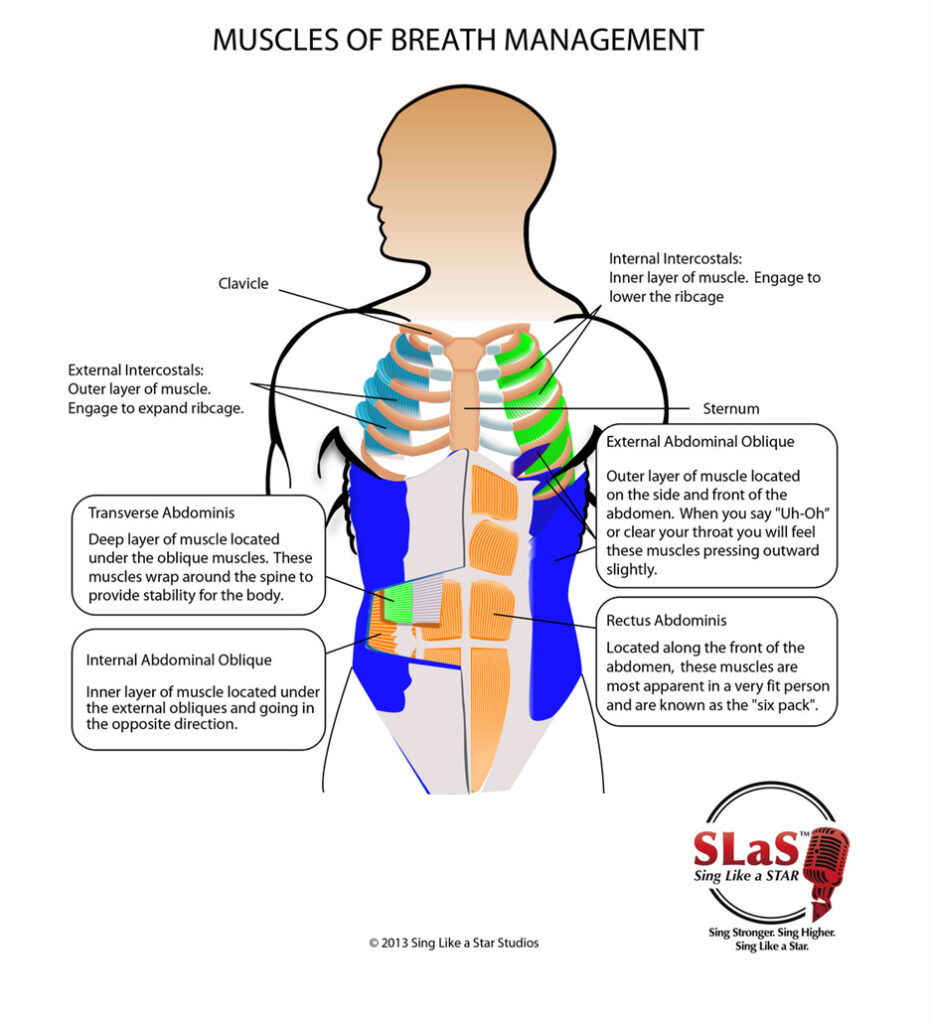Sing Like a Star Studios founder Tricia Grey, MM leads you through a six-minute daily vocal workout. This workout is for males singers. Females, we have also provided a workout for you in a separate video.
This daily workout is comprised of five steps:
Step One is posture, breathing, and support (appoggio). Posture: First, make sure your posture is correct. Your chest should be slightly elevated for singing. Squeeze your shoulders up to your ears then around and back. Your chest will now be slightly higher and in the perfect position for singing. Make sure the chin is level and the gaze is straight ahead. Breathing: As you inhale your epigastrium (the area between the sternum and the navel) should expand. Then to activate breath support, hiss out loudly for five counts. Repeat that several times. You have now activated the muscles of breath support: the Tranversus Abdominus, Internal and External Obliques, and the Rectus Abdominus muscles.
 Step Two is activating the Lower Register (chest voice). This area is also known as TA-dominant because the thyroarytenoid muscle is more active on lower pitches. These exercises are the Easy Call exercises because they use the voice in a similar manner to calling out- as if you see a friend across the street and call out to them. This creates a clear and strong sound in the lower register. We use the phrase SSS-SSS-w[o] with a slightly imposed larynx.
Step Two is activating the Lower Register (chest voice). This area is also known as TA-dominant because the thyroarytenoid muscle is more active on lower pitches. These exercises are the Easy Call exercises because they use the voice in a similar manner to calling out- as if you see a friend across the street and call out to them. This creates a clear and strong sound in the lower register. We use the phrase SSS-SSS-w[o] with a slightly imposed larynx.
Step Three is activating the Upper Register (head voice). This area of the voice is also called CT-dominant because the cricothyroid muscle is more active on high notes. We are again going to use the idea of calling out, but on a higher pitch and more closed vowels for energized vocal production in the upper register. We use the phrase w[u]-[I] with a lifted soft palate and slightly imposed larynx.
Step Four is where we go back and forth between the lower and upper registers with a very punchy and energetic quality. At this point we still want to be sure the registers are isolated and that we are using TA-dominant phonation on the low notes (chest voice) and CT-dominant phonation on the high notes (head voice). We use the phrase g[o]-g[o]-g[I]-g[I]-g[o] with a slightly imposed larynx.
Step Five is where we start to mix and blend the registers. For this step we use a pharyngeal, bratty, witchy quality on a 1.5 octave long scale and the syllable n[ei] (nay). The “brattier” you can make this, the better!
Take each exercise up several steps and then back down to the starting key. Once you have completed Step Five and are mixing you are ready to sing a song!
